
German postcard by Ross Verlag, no. 1653/1, 1927-1928. Photo: Mario von Bucovich (Atelier K. Schenker). Mary Johnson.
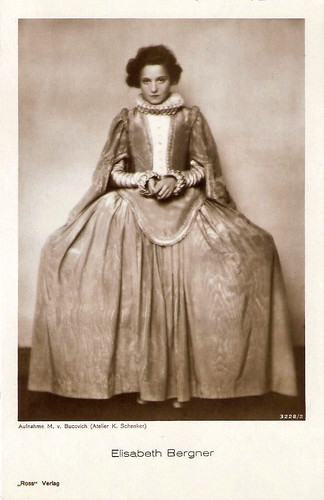
German postcard by Ross Verlag, no. 3228/2, 1928-1929. Photo: Mario von Bucovich (Atelier K. Schenker). Elisabeth Bergner in Doña Juana (Paul Czinner, 1928).

German postcard by Ross Verlag, no. 3228/3, 1928-1929. Photo: Mario von Bucovich (Atelier K. Schenker). Elisabeth Bergner in the outfit for Doña Juana/ Donna Juana (Paul Czinner, 1928).

German postcard by Ross Verlag, no. 4821/1, 1929-1930. Photo: Mario von Bucovich (Atelier K. Schenker). Anita Dorris.
Deported to Siberia
Mario von Bucovich or Marius von Bucovich was born in 1884 in Pula in the Istrian region of the Austro-Hungarian Empire. He held the title of Baron. His father, August, Freiherr von Bucovich, was a former Corvette Captain in the Austro-Hungarian navy and later an entrepreneur in the railroad concession sector. His mother was Greek.
Mario began studying mathematics and mechanics at the Eidgenössischen Technischen Hochschule (Swiss Federal Institute of Technology) in Zurich in 1904. He continued these studies in Nancy, France. From 1908 to 1909 he studied electrical engineering and mechanical engineering at the Technikum Mittweida in Saxony. He began his professional career in 1909 at the Otis Elevator Company in New York City, USA, which sent him to the Russian capital St. Petersburg in 1911. There he also dealt with the profitable sale of agricultural machinery.
In 1913, Von Bucovich acceded to his title as Baron upon his father's death. In 1914 he was deported to Siberia as an enemy foreigner but was able to flee and return to St. Petersburg. From 1918 he dedicated himself to the repatriation of the deportees who remained in Siberia, which was very difficult due to the civil war in Russia. The title of Baron and the privileges lapsed with the 1919 Law on the Abolition of the Nobility.
In the 1920s, he worked primarily in Germany but also travelled to France and England. Bucovich was active in the art and antiques trade and settled in Berlin, where he became an authorised signatory in Karl Schenker's photo studio in 1925. The following year, he took over the photo studio. Between 1926 and 1930, von Bucovich and his wife, Marie, who was also a photographer, ran their studio from Budapester Straße 6, in Berlin's Tiergarten district.
In his published work he was most noted for his urban studies with a focus on streetscapes, but his studio work undertaken at the Atelier Karl Schenker was often of entertainment personalities of the Weimar period stage and screen. He photographed Marlene Dietrich, Elisabeth Bergner and Leni Riefenstahl in her days as a dancer, preceding her career as a film director. Von Bucovich also became known as a nude photographer.

German postcard by Ross Verlag, no. 1925/1, 1927-1928. Photo: M. v. Bucovich / Atelier K. Schenker, Berlin. Werner Fuetterer.
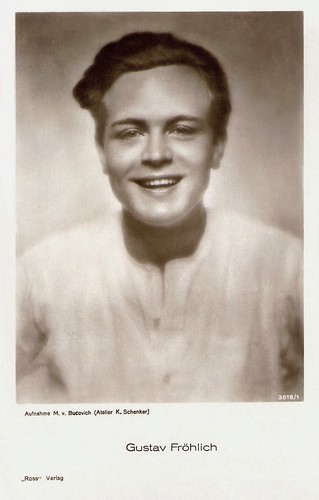
German postcard by Ross Verlag, no. 3018/1, 1928-1929. Photo: M. v. Bucovich (Atelier K. Schenker). Gustav Fröhlich.
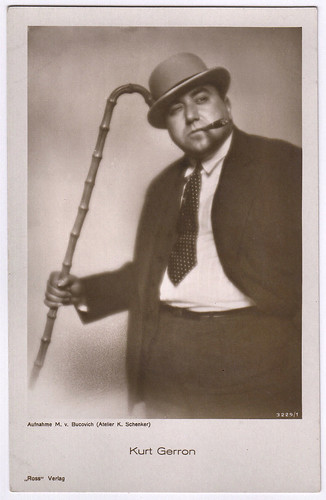
German postcard by Ross Verlag, no. 3229/1, 1928-1929. Photo: M. von Bucovich (Atelier K. Schenker). Collection: Marlene Pilaete. Kurt Gerron.
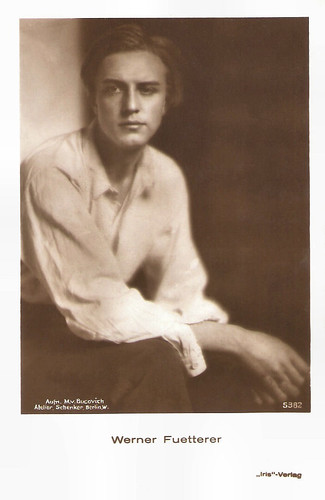
Austrian postcard by Iris Verlag, no. 5382. Photo: M. v. Bucovich / Atelier K. Schenker, Berlin. Werner Fuetterer.
Manhattan Magic
Amongst Mario von Bucovich's most notable books were 'Berlin, Das Gesicht Der Stadt' (Berlin, Portrait of a City) and 'Paris' (with a foreword by Paul Morand). The Paris book included photos by Germaine Krull. The Berlin book published originally by Albertus Verlag, a publishing house he founded in 1928, had a foreword written by the author Alfred Döblin.
During the late 1920s, his photos appeared across the gamut of German photojournalism including the titles: Der Querschnitt, Uhu, Die Dame, Die neue Linie, Das Magazin, Skizzen, Welt-Magazin, Kölnische Illustrierte Zeitung, Revue des Monats, Das Kriminalmagazin, Das Leben, Das Kunstblatt, Farbe und Form, Das Deutsche Lichtbild, Deutscher Kamera Almanach, Die Reklame, and Der Photo-Freund. His views of Girona in Spain taken in 1933 were published in the National Geographic magazine.
In 1931, Von Bucovich moved to New York, via Wiesbaden, London and Paris. In New York, he had a studio at 687 Lexington Avenue and worked for a publishing house on 41st Street. In his American period, he published two photographic essays, 'Washington D.C. City Beautiful' and 'Manhattan Magic: A Collection of Eighty-Five Photographs'. In 1939, he moved to Mexico and was working there through at least the early part of that decade, until his death in 1947 in a traffic accident in Mexico City. He is believed to have been married four times.
His work was shown at major photography salons of the day. He was represented at probably the most important German photography exhibition of the Bauhaus period, 'Fotografie der Gegenwart' (Contemporary photography) in Magdeburg in 1929. He was also shown at the Fourth International Exhibition of Pictorial Photography at the California Palace of the Legion of Honor, the Third International Exhibition of Pictorial Photography Seattle Camera Club, and the 15th and 16th Annual Pittsburgh Salon of Photographic Art at the Carnegie Institute.
His work is in the collections of the New Orleans Museum of Art, the National Museum of Mexican Art and the National Gallery of Canada. The Berliner Morgenpost described him in 2009 as "one of the great unknown photographers of 20th Century European photography".

German postcard by Ross Verlag, no. 1551/1, 1927-1928. Photo: M. von Bucovich (Atelier Karl Schenker) / May Film. Mia May.

German postcard by Ross Verlag, no. 1715/1, 1927-1928. Photo: M. v. Bucovich (Atelier K. Schenker). Lia Eibenschütz.

German postcard by Ross Verlag, no. 3018/2, 1928-1929. Photo: M. von Bucovich (Atelier Schenker, Berlin). Gustav Fröhlich.
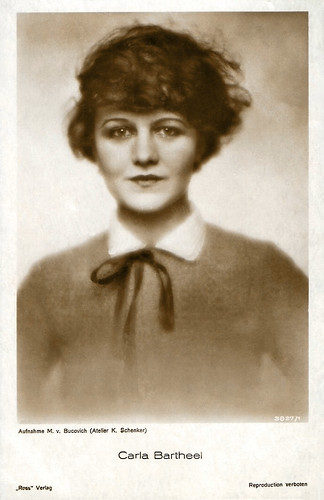
German postcard by Ross Verlag, no. 3827/1, 1928-1929. Photo: M. von Bucovich (Atelier K. Schenker). Carla Bartheel.
Sources: Wikipedia (English and German).
No comments:
Post a Comment